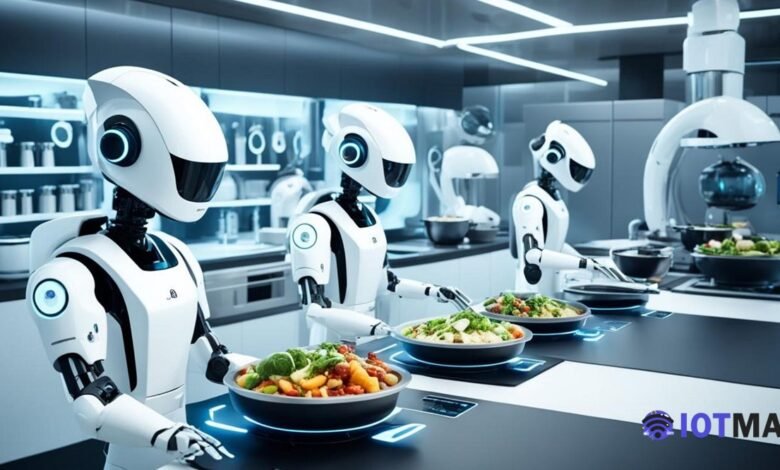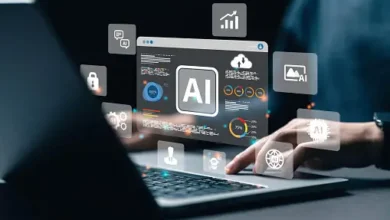AI Robot Chef: The Future of Culinary Arts?
A few years ago, it was considered impossible to have mechanical chefs that could perform a variety of kitchen-related tasks, including cooking fries and pasta, flipping burgers, and assembling pizzas.

The culinary industry is implementing numerous cutting-edge technologies. A few years ago, it was considered impossible to have mechanical chefs that could perform a variety of kitchen-related tasks, including cooking fries and pasta, flipping burgers, and assembling pizzas. However, it is now widely recognized that this is possible. AI robot chefs are capable of much more today. By utilizing onboard sensors, optical cameras, and advanced AI technology, these AI robot chefs are inherently engineered to multitask, executing the actions and movements of professional human cooks in real time.
What Is an AI Robot Chef?
In simple words, an AI robot chef is a robot that has been enhanced with AI and is meant to cook food. Moley Robotics, one of the newest AI robot cooks, is the world’s first fully robotic kitchen. It works as an AI autonomous system that can do almost all of the cooking for you. It is a device that hangs from the roof and works with a smart kitchen as a whole. It slides along a track in the ceiling on its two arms and can change the temperature, use the sink, mix and pour ingredients into pans, and stir pots. Mosley Robotics can cook more than 5,000 meals at once and clean up when it’s done. It comes pre-programmed with recipes.
These robots can learn how to make food with the help of cooking tools that have sensors on them that read recipes. They can see, hear, touch, and smell, and they can keep an eye on more than 1,200 points every microsecond. These feelings send input to their operating systems (OS), which makes a learning loop like the one a person has. They can learn new skills over time and automate many kitchen jobs with these features. AI robot cooks have touch, proximity, and tactile sensors that record chores, movements, and cooking recipes. This helps the robots figure out when to replace ingredients, suggest foods, keep an eye on calories, and change the menu to fit different diets and ways of life. The AI robot chef can learn how to do these things and teach itself by storing knowledge in a database and getting it out when it’s needed.
There are many signs that the world is ready for more cutting-edge technologies like AI robot chefs. In fact, experts say that by 2025, there will be 482.8 million smart houses. Also, the number of people living in the world is expected to reach 8 billion by the end of 2022. This will make more people want to eat, which will put pressure on the global food business and make people want better food quality that will last. This is where the AI cook robot comes in handy.
Benefits of AI Robot Chef
#1: Solves Understaffing
Most restaurants, fast food chains, and high-volume kitchens don’t have enough staff, but an AI robot chef can help by doing some of the work that humans do, saving money and making the customer experience better.
#2: Reduces Waste
By giving out only the items needed for each meal, AI robot chefs help cut down on food waste and costs by getting rid of the need for people to guess too much. Also, an advanced AI robot chef can keep an eye on and change the temperature and humidity of food storage containers to keep ingredients from going bad.
#3: Smart Kitchen Collaboration
Most homes now have smart kitchens, which have automated features and partially self-driving tools that the AI-enhanced robot chef needs to work well. This makes cooks spend less time in the kitchen.
#4: Contamination Reduction
AI robot chefs serve to eliminate the risk of contamination arising from foodborne illnesses. They also encourage savings, increase business profit, and enhance customer satisfaction and loyalty.
Limitations of AI Robot Chef
When getting food ready to cook, the AI Robot Chef can’t do things like peeling a potato or garlic, dicing carrots, or cutting fruits or veggies. At the time, AI robot chefs are very pricey, so many people can’t afford to buy them. People naturally like to cook and trust the food they eat, so AI robot chefs probably won’t totally replace human cooks. Instead, they might be used as an assistant.
The Bottom Line
Cambridge University researchers have made an AI robot chef that can taste food at different stages of chewing. While this is still a work in progress, the end goal is to have an AI robot chef that can chew anything and use its better taste buds to do so. Additionally, AI robot cooks would need to have better taste receptors so they can understand sweet, sour, salty, bitter, and savory tastes.
Still, we need to make progress on creating an AI robot chef that can better incorporate specific data as it comes into its operating system. This will allow it to be more flexible, work better, and produce better results. Online robotic ghost kitchen looks like it will be the next big thing. It will let people make their own menus and recipes and buy food online. When given instructions, these AI robots would follow them to the letter and bring the food to their customers in record time.
In general, it looks like the best time ever for food business technology has come and gone. Even though this progress has been slowed down, there is hope that the AI robot chef system will be accepted around the world, which will make up for the many years it took to create.







